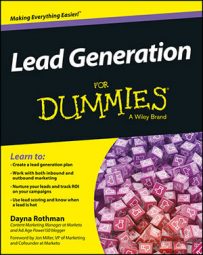Webinars are a splendid way to generate new leads, as well as nurture leads that are already in your database. Webinars are delivered via the web and can happen in real time or on-demand, by viewing a recording.
Typically lasting for about 30–60 minutes, webinars can include one speaker or even a full panel, and enable interaction amongst participants in the form of questions or polls. But don't be afraid to mix it up if you have a creative idea for engaging your audience.
You can also tailor webinars to different stages of the sales funnel. For instance, your webinar mix for a given month might looks like this:
Week 1: Thought leadership TOFU (top-of-funnel) webinar
Week 2: Thought leadership joint TOFU webinar with partner
Week 3: Thought leadership MOFU (middle-of-funnel) webinar
Week 4: Product-specific BOFU (bottom-of-funnel) demo webinar
Note that in a four-week spread, you can cover all stages of the funnel, speaking not only to all of the leads in your database, but also to any new leads you have acquired.
You can sprinkle in paid webinar programs as part of your mix. Many industry publications and organizations offer sponsored webinars. Take advantage of this program so you can get access to new leads and databases. These organizations often have a lead-sharing program for you to acquire all of the leads that signed up for your webinar.
So what is the ideal number of webinars you should participate in per month? It depends on your business. If you are a small company, shoot for at least one webinar per month. If you are a medium-sized company, shoot for three to four webinars per month. Large companies should be participating in multiple webinars per week.
It's critical to set expectations for registration and attendance when embarking on your webinar program. On average, you can expect that one-third of the people who register will attend your webinar. Keep that in mind when setting registration and attendance goals.
The majority of your lead-generation webinars should be focused on education and thought leadership. Just like with content marketing and other lead-generation programs, in order to get leads into your funnel, you need to give your audience a reason to sign up for your webinar. And by offering industry best-practices or bringing in a well-known speaker, you can generate much more interest.
Where many companies fail is providing high-quality thought leadership webinars that map to early stage leads. Instead, they produce webinars that are very product-centric. By hosting lots of TOFU webinars, you have a vehicle to draw leads in. Later, you can serve them promotional content.

